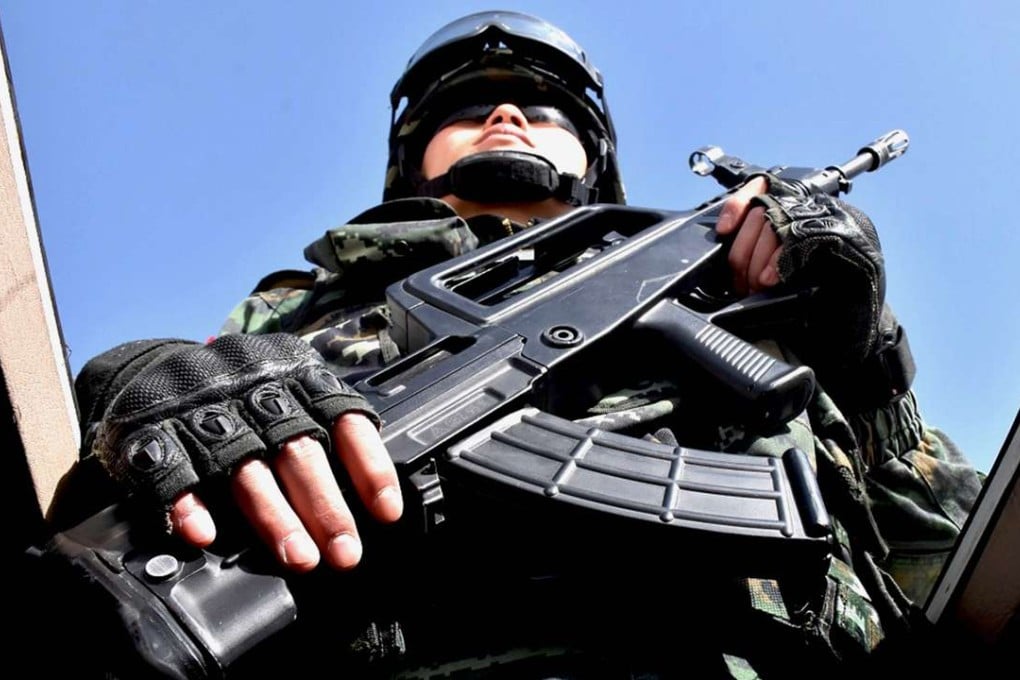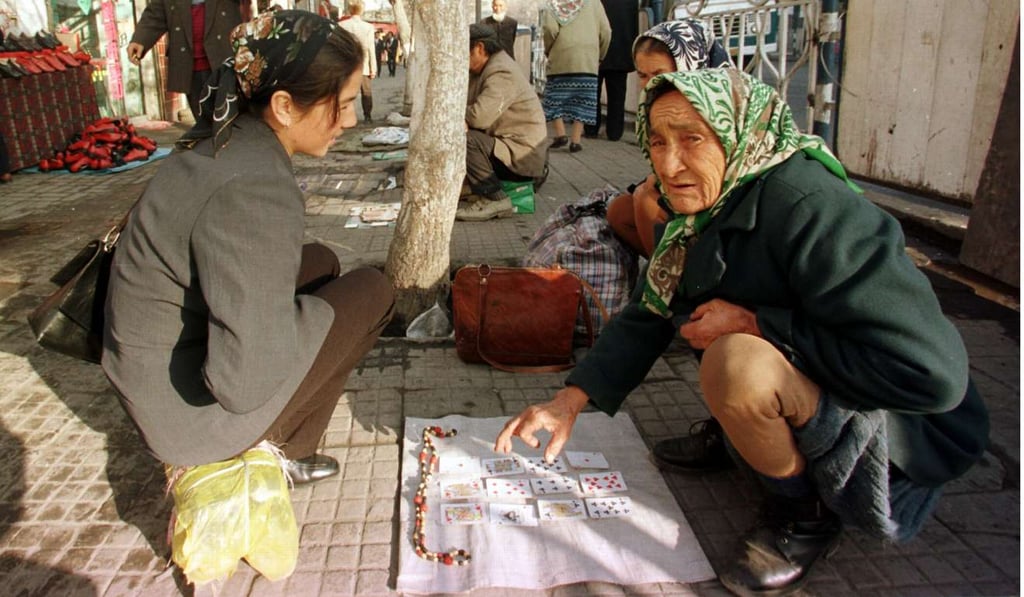What do Islamic State and Tibet have to do with China’s crackdown in Xinjiang?
Authorities’ show of force in China’s restive western region follows a spate of terror attacks and an IS video featuring Uygurs

The HEAT IS on in Xinjiang. A string of deadly killings, blamed on Islamist separatists, have rocked China’s restive far western province and prompted authorities into an unprecedented show of force – and a social clampdown experts say has been imported from Tibet (西藏).
Huge military parades have taken place in Hotan (和田地區), Kashgar (喀什地區) and Urumqi (烏魯木齊) featuring thousands of servicemen, signalling the authorities’ intent to “relentlessly beat, and strike hard against terrorism”, in the words of the local Communist Party deputy chief Zhu Hailun.
The show of force comes after a knife attack in February that killed eight people and a car bomb in December that killed five. In January, three suspected terrorists were shot dead in Hotan while resisting arrest.

Those attacks are just the latest grisly episodes in the region’s years-long struggle against terrorism that has claimed hundreds of lives. Authorities blame the attacks on ethnic Uygur militants belonging to the separatist East Turkestan Islamic Movement (ETIM), though some critics doubt whether ETIM exists as a cohesive group, claiming the attacks are more a reaction to repressive government policies that target the Uygurs’ way of life.
Why China’s ‘One Belt, One Road’ plan is doomed to fail
The spate of violence coincides with the release this month of a half-hour video by Islamic State that features Uygurs issuing the terror group’s first threat against Chinese targets. The event has added credibility to warnings by Beijing of the potential for Xinjiang militants to link up with global jihadist groups. Chinese President Xi Jinping ( 習近平 ) told Xinjiang’s delegation at the National People’s Congress in Beijing this month that the area required a “great wall of iron” to keep out Islamic separatists. He also underscored the need for “ethnic unity”.